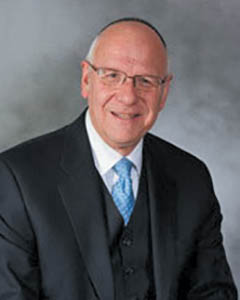
Shabbat Shekalim
Parshat Mishpatim
The Shabbat of, or before, Rosh Chodesh Adar (the Adar that precedes Pesach) is designated by the Gemara in Megilla as the first of the “special” parshiot that herald the arrival of Pesach and require a special reading for the Maftir and, consequently, for the haftarah as well. The selection for this Shabbat Shekalim is taken from the 12th perek of Melachim II and tells the story of the repair of the Beit Hamikdash in the days of King Yeho’ash.
As the special Maftir reading calls for the half-shekel head tax to be gathered from all of Israel, so the haftarah tells of the “fundraising” campaign demanded by the king in order to restore and reinforce the Holy Temple. As the half-shekel tax was used for the purchase of communal sacrifices, thereby ensuring that the entire community had a share in these offerings, so the voluntary donations made by the entire nation in the days of Yeho’ash reinforced the idea that all of Israel had a share in the Beit Hamikdash.
It is, however, the entire story of King Yeho’ash, a tragic story that is not found in Sefer Melachim, that should be learned as well. In Divrei HaYamim II 22-24, we learn the details of the life of King Yeho’ash. When his grandmother, the wicked Queen Atalya, killed off the royal family in order to consolidate her hold upon the throne of Yehuda, the infant Yeho’ash (the rightful heir as the son of the former king Achazyahu) was saved from death by his aunt Yehoshav’at, the wife of the kohen gadol, Yehoyada. This righteous couple hid the infant in the Beit Hamikdash (!!!) until he was 7 years old when his existence was revealed to the nation who quickly deposed the hated queen and placed the young child upon the throne. Yeho’ash was brought up, educated and trained by Yehoyada (note the opening words of our haftarah), and throughout that time followed the righteous ways of his mentor.
When Yehoyada died at the age of 130, the king fell under the influence of the corrupt Judean nobility who convinced him to abandon Temple worship and pray to the false gods of the surrounding nations. Hashem sent His prophets to admonish Yeho’ash, among them Zecharya (not to be confused with the prophet of the Second Temple), the son of Yehoyada, the very man who saved the king’s life. Yeho’ash ignored the many kindnesses done for him by his mentors and he ordered that Yehoyada’s son, Zecharya, be stoned to death! So ends the story of the once-righteous king who restored the Beit Hamikdash.
To a certain degree, this bittersweet story evokes parallels to the Purim story, a story that has a tragic side to it as well. After all, although we celebrate the survival of the Jewish community in Persia, too many still don’t learn the lesson of the Megilla, i.e., the precarious existence of the Jew in galut. In this time that danger surrounds us we must keep in mind that the Jew is safest living in his own land!
By Rabbi Neil N. Winkler








